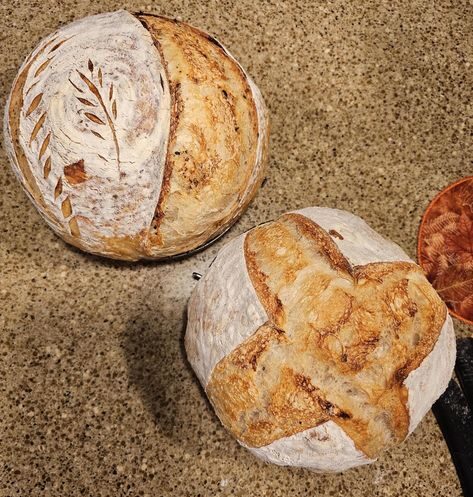Baking Perfect Sourdough Bread Every Time
Mastering the Sourdough Bread Recipe
With your starter thriving, it’s time to turn it into a beautiful loaf. Follow this detailed recipe to achieve bakery-quality results:
Sourdough Bread Recipe Ingredients
Step-by-Step Guide
- Mix Dough : Combine starter, flour, and water until a shaggy mass forms. Cover and let it rest for 30 minutes (autolyse).
- Add Salt : Incorporate salt and knead gently for 5–10 minutes.
- Stretch and Fold : Perform stretch-and-fold motions every 30 minutes for 2–3 hours to develop gluten structure.
- Bulk Fermentation : Allow the dough to rise at room temperature for 4–6 hours, depending on warmth.
- Shaping and Proofing : Shape the dough into a boule and place it seam-side up in a proofing basket. Chill overnight in the refrigerator.
- Bake : Preheat your oven to 475°F (245°C) with a Dutch oven inside. Transfer the dough, score the top, and bake for 25–30 minutes.
Troubleshooting Your Sourdough Bread
Common Challenges and Solutions
Even experienced bakers encounter hiccups along the way. Here’s how to address common issues:
- Dense Loaf : Check your hydration levels and ensure proper fermentation times. Overmixing can also lead to dense results.
- Weak Crust : Steam is crucial for achieving a crackling crust. Try placing a tray of water in the oven during baking.
- Overproofed Dough : Reduce proofing duration or lower the ambient temperature.
By troubleshooting thoughtfully, you’ll refine your technique and produce consistently great loaves.

Experimenting with Flavors and Textures
Variations and Add-Ins for Your Sourdough Bread
Once you’ve mastered the basics, feel free to experiment. Adding different ingredients can transform your sourdough into something extraordinary:
- Seeds and Nuts : Sprinkle sunflower seeds, sesame seeds, or chopped walnuts for added crunch.
- Herbs and Spices : Infuse rosemary, thyme, or garlic powder for savory notes.
- Cheese : Fold shredded cheddar or crumbled feta into the dough for a cheesy delight.
- Sweet Options : Consider cinnamon raisin or honey walnut variations for breakfast treats.
Don’t be afraid to think outside the box. Each addition brings new dimensions to your bread.
Frequently Asked Questions About Sourdough Bread
Answers to Your Burning Questions
- Can I freeze sourdough bread?
A: Yes! Freeze slices individually for easy access or store entire loaves wrapped tightly in plastic. - Does sourdough contain less gluten than regular bread?
A: Not necessarily, but fermentation breaks down gluten structures, making it easier to digest. - How often should I feed my starter?
A: Feed daily if kept at room temperature; weekly if refrigerated. - Can I substitute instant yeast for sourdough starter?
A: No, sourdough requires a natural starter for its distinctive qualities. - Why does my sourdough smell too sour?
A: Adjust feeding frequency or shorten fermentation times to balance acidity.
Final Thoughts: Embrace the Magic of Sourdough Bread
Conclusion
Sourdough bread isn’t merely sustenance—it’s an experience. From cultivating a starter to shaping and baking a loaf, every step invites you to slow down and appreciate the process. Whether you’re seeking healthier eating habits or simply want to enjoy homemade goodness, sourdough offers endless possibilities.
So, here’s your call-to-action: Grab your tools, gather your ingredients, and dive into the world of sourdough. Share your creations with friends and family, and don’t forget to document your progress. Join online communities or local bakeries to exchange tips and inspiration. Most importantly, remember that practice makes perfect. With dedication and curiosity, you’ll soon be crafting loaves worthy of admiration.
Happy baking!

